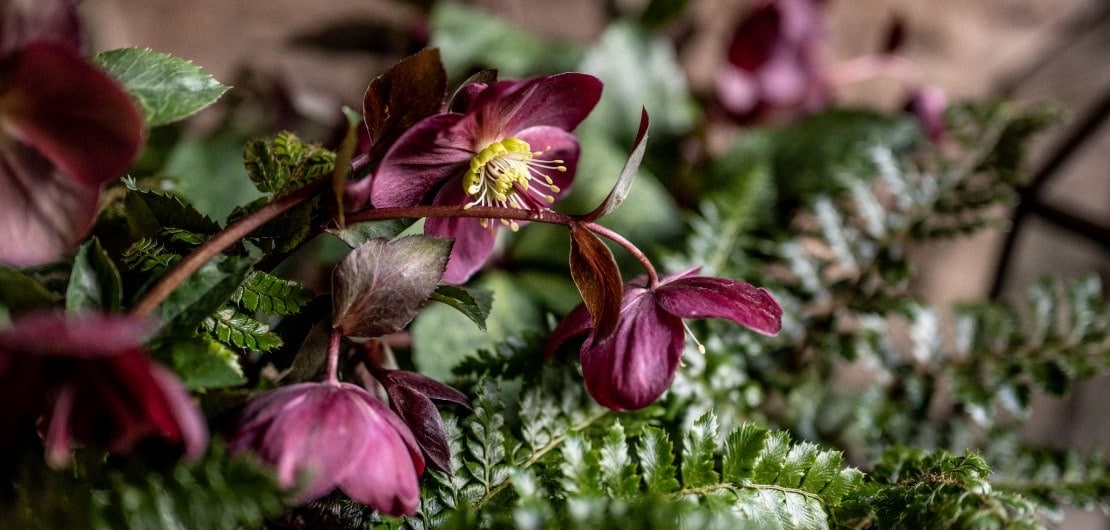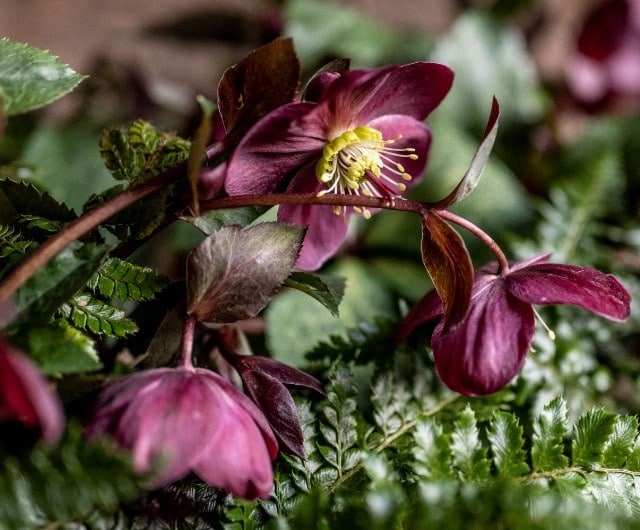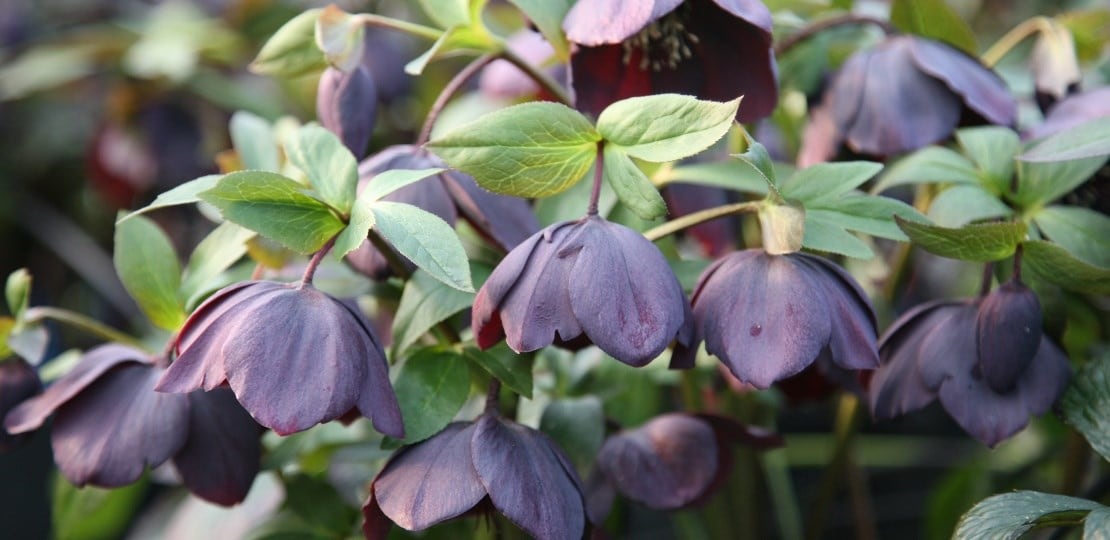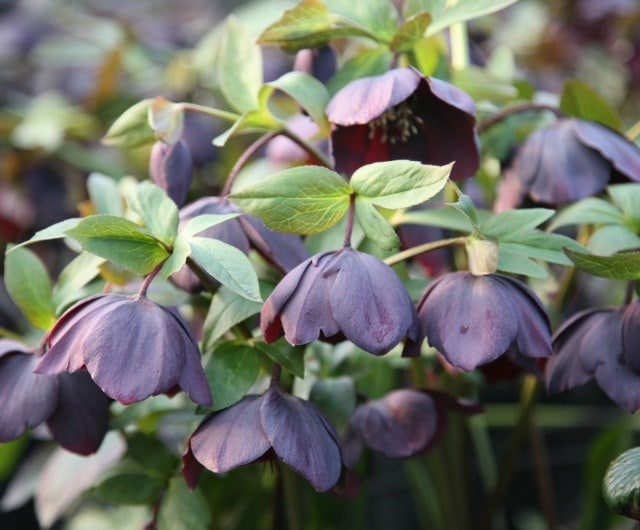Hellebores - heroes of the winter garden
January 2025


Incredibly easy to grow, and resilient to the challenges of the British weather, hellebores are the jewels of the winter garden, freely producing an abundant supply of colour when little else is in bloom. And this year we are delighted to add over 40 new varieties to our range, giving you access to the one of the largest collections of hellebores in the country
We’re particularly excited about stocking the full range of Harvington and Rodney Davey hellebores from some of the country’s leading breeders, along with new additions to the Pretty and Double Ellen varieties in edible tones of deep purples and peachy pinks that light up the winter garden with their winter beauty.
Five ways to make the most of hellebores in the garden
Hellebore displays in pots or containers
Most hellebores will put on a terrific seasonal show in a pot or container, provided their big, fleshy roots are given plenty of room to spread and grow. For this reason, choose deep pots and use rich compost.. Fabulous on their own or notch up the display with evergreen ferns or trailing ivy.
Create a naturalised look in woodland, cottage or urban gardens
Plant your hellebores in oddly numbered groups amongst grassy or shady areas, or set them out to form irregular drifts. Add extra colour by scattering (and planting where they fall) spring flowering bulbs such as snowdrops, crocus, grape hyacinths, daffodils and convallaria.
Add structure and colour to the winter border
Plant hellebores throughout your border to create early pops of colour, ahead of displays by spring flowering bulbs. Even when not in flower, the foliage of a hellebore can put on a lush and lovely display that will add interest and definition to a planting scheme.
Create winter cut flower arrangements
Hellebores also make lovely cut flowers, but for the longest lasting displays, simply snip off the flowerheads and float them in a bowl of water. Alternatively, stems can be cut for a vase, but to prolong their lifespan, use a sharp knife to make an incision along the side of the stems before plunging them into water.
Create a haven for wildlife
Hellebore flowers are packed with sugar-rich nectar and high protein pollen, so they're a treat for early-rising pollinators, like the solitary bumble bees, looking for a quick and nourishing fix of essential nutrients. Choose some of the single forms to give them easy access.


Rising over mounds of attractive evergreen foliage, their nodding flowers come in a dazzling assortment of colours that range from clear whites to near blacks (with all shades of pink, purple and red in between), as well as fresh and zesty greens and yellows. To add to the mix, their showy, petal-like sepals are often striped, picotee or freckled, while there are frilly doubles, simple singles or intriguing anemone-forms to choose from.
Like sweeties in a candy shop, the flowers are a beacon for early-rising pollinators looking for a quick energy fix. Not just pretty to look at, they're packed with sugar-rich nectar and high protein pollen, which makes them invaluable additions to wildlife-friendly gardens.
It's not just pollinators who seek them out however, as they're also popular with florists. Pick the stems after the flowers have shed their stamens and the seedpod has started to swell, and the flowers can last for a week or more in the vase. Irrepressibly cheerful, they're perfect for bringing inside and popping on a table or windowsill to brighten up the decor on a wet winter's day.
Adaptable and undemanding plants, hellebores are perfect for beginner gardeners. Most are happiest in reliably moist but not waterlogged soils, and the dappled light that falls beneath deciduous trees and shrubs. Often described as woodlanders, they're ideally suited to more naturalised planting, such as cottage or new-perennial style schemes.
They're also extremely useful in small urban gardens, where every inch of space is valuable and plants really need to earn their keep. Tuck in some early flowering Christmas roses (Helleborus niger spp.) with the later flowering Lenten rose (H. x hybridus spp.), and enjoy a low-fuss display that will last from December to April.
Where there's space, plant them in generous drifts and intersperse with spring-flowering bulbs, ferns, hostas, digitalis or Japanese anemones for an organic woodland feel.
Alternatively, on patios, windowsills or near entranceways, they can be potted up and underplanted with seasonal bedding and bulbs. These are deep-rooted plants though, so try to choose taller pots if possible, and de-cant them all into the garden after they've finished flowering. That way, these hardy herbaceous perennials will bring joy for many years to come.










